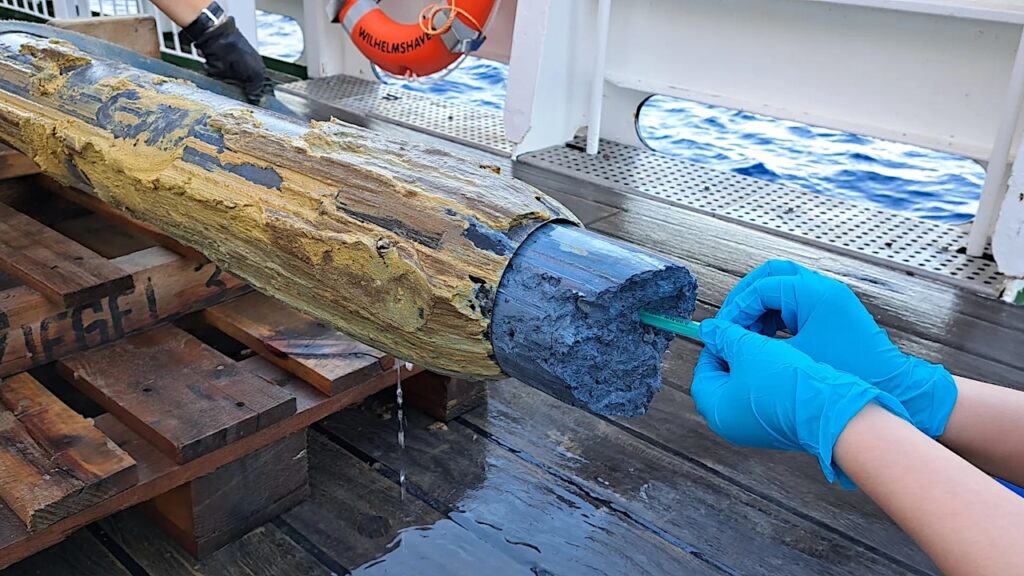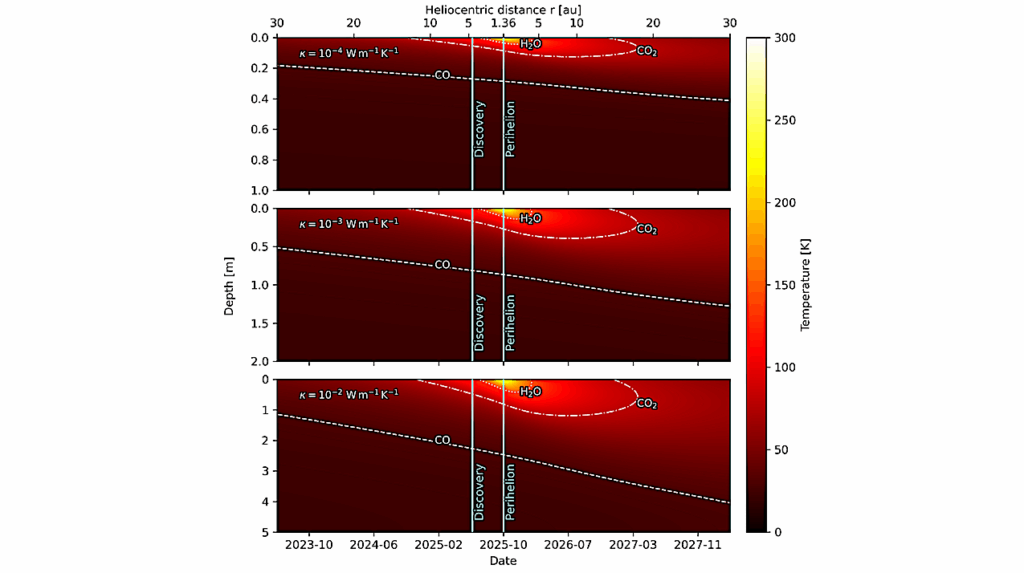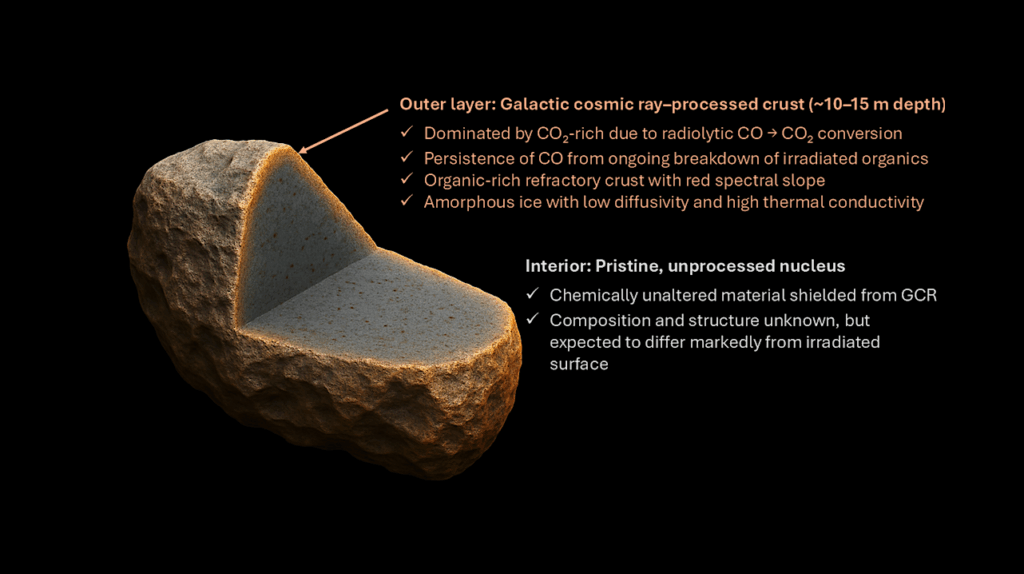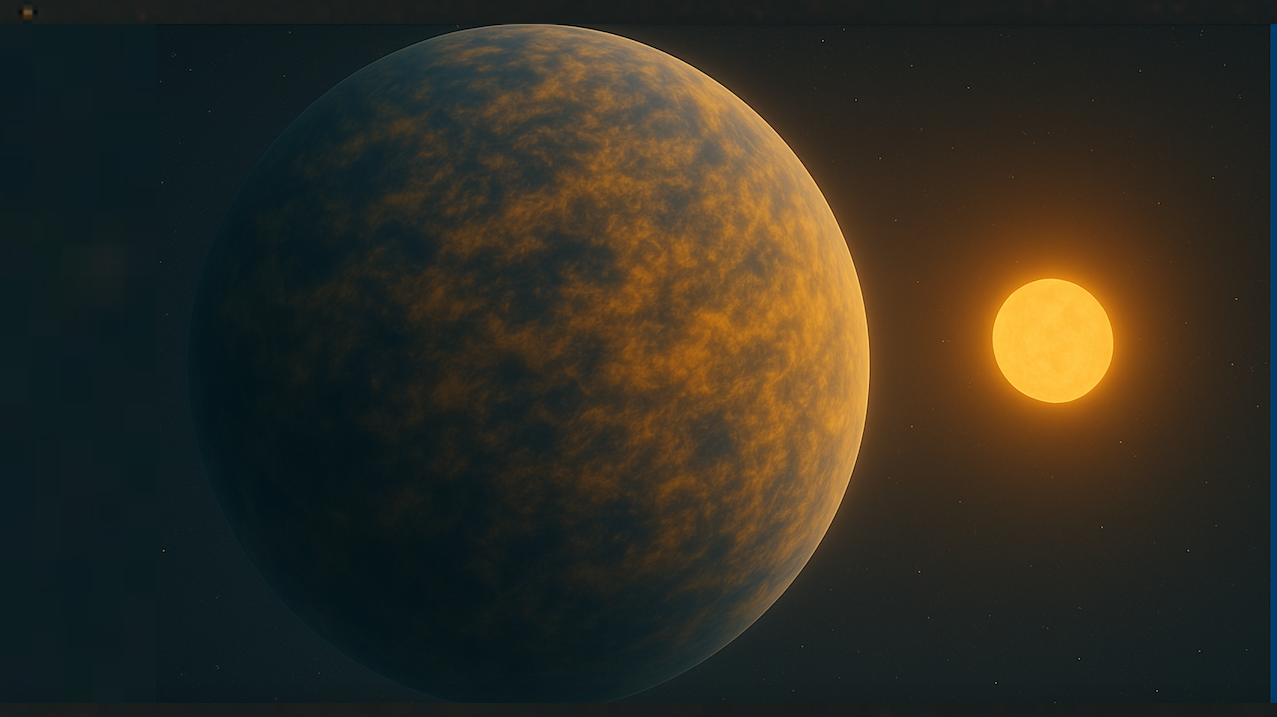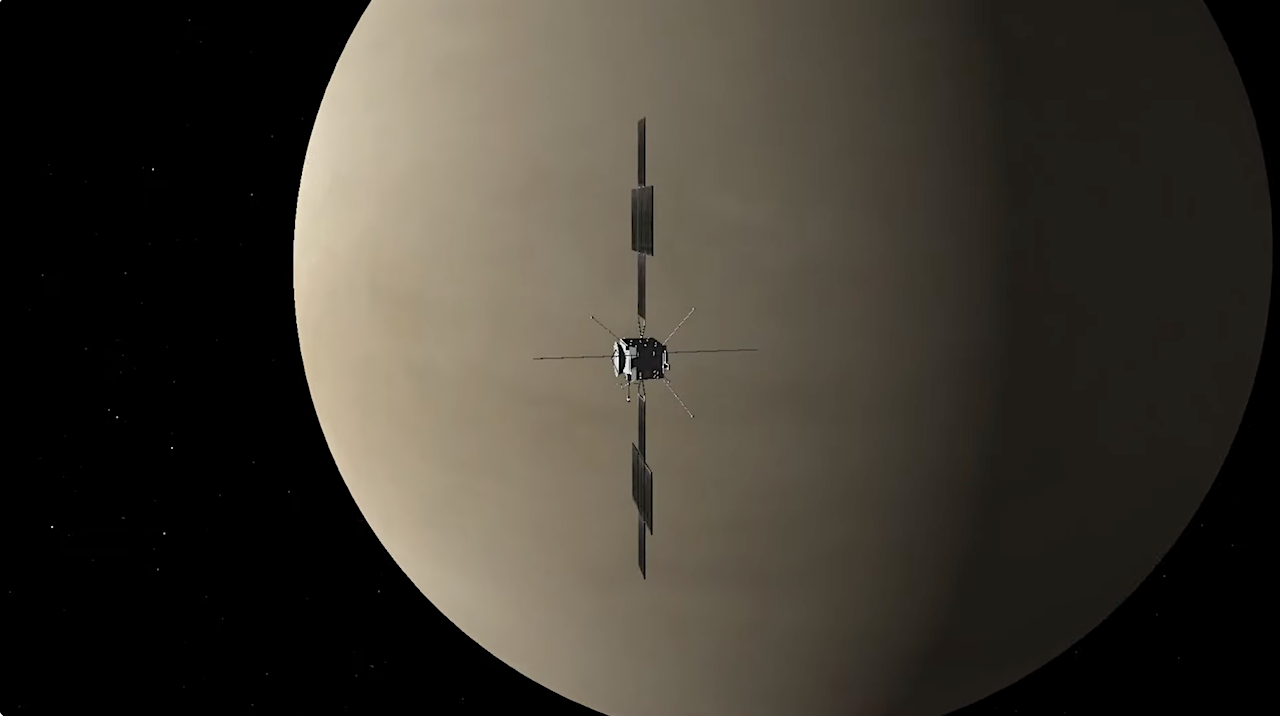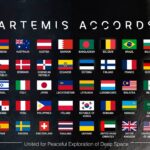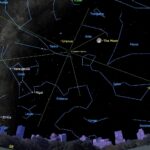Now Reading: Terrestrial Planets In Mean-motion Resonances Are Water Rich
-
01
Terrestrial Planets In Mean-motion Resonances Are Water Rich
Terrestrial Planets In Mean-motion Resonances Are Water Rich
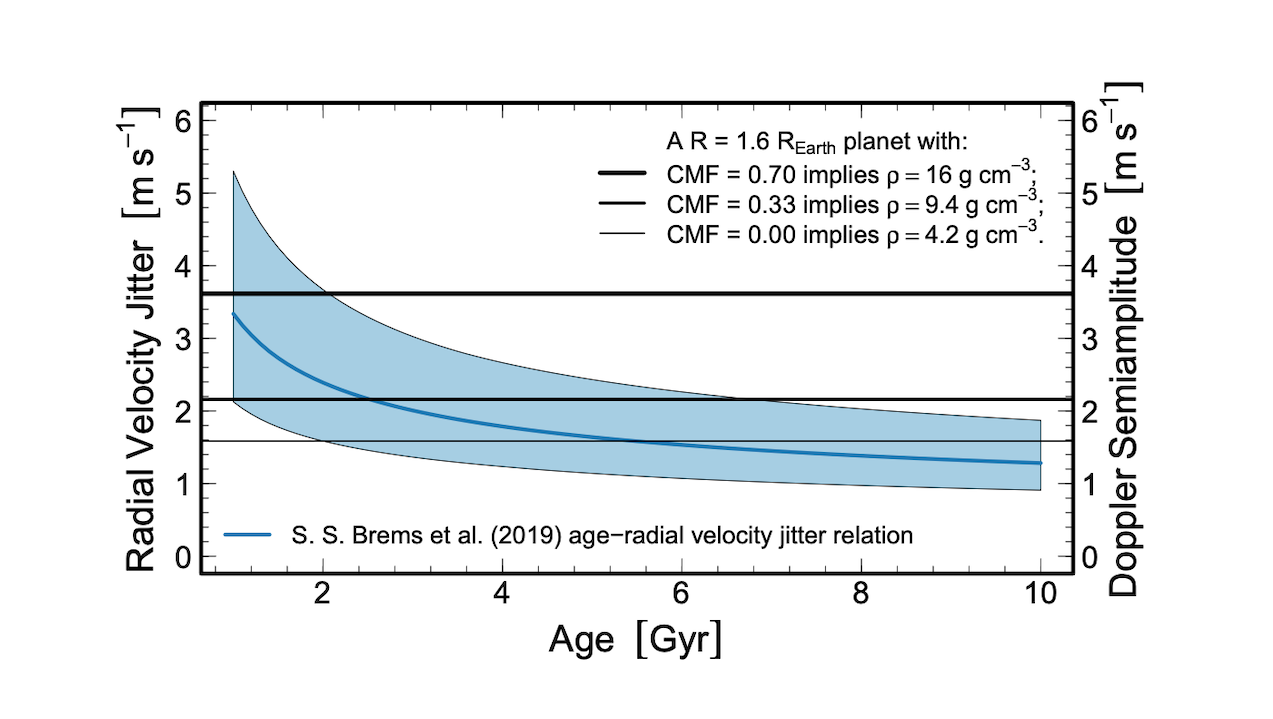

Expected Doppler semiamplitude imparted on a solar-mass host star by a super-Earth with orbital period P = 2 days and Rp = 1.6 R⊕ as a function of core-mass fraction superimposed on the S. S. Brems et al. (2019) relationship between stellar age and radial velocity jitter. The solid blue line is the maximum-likelihood S. S. Brems et al. (2019) relationship while the light blue polygon is the 16th to 84th interquantile range; the horizontal black lines indicate the Doppler semiamplitudes imparted by the hypothesized super-Earths. We find that while high core-mass fraction super-Earths can be detected in the presence of radial velocity jitter at all ages, low core-mass fraction super-Earths can only be detected orbiting host stars with ages in excess of 5 Gyr. This observational bias against the detection of low core-mass fraction terrestrial exoplanets orbiting young stars can easily explain the statistically significant inverse correlation identified by A. Weeks et al. (2025) between host star age and either the logarithm of planet density or iron-mass fraction. — astro-ph.EP
Exoplanet Mass And Radius Inferences Fundamentally Rely On Host Star Mass And Radius Inferences.
Despite the importance of host star mass, radius, and elemental abundance inferences for the derivation of exoplanet internal structure constraints, published constraints have often been based on inferences that are not self-consistent.
For 24 dwarf stars hosting terrestrial exoplanets, we use astrometric and photometric data plus high-resolution spectroscopy to infer accurate, precise, homogeneous, and physically self-consistent photospheric and fundamental stellar parameters as well as elemental abundances. We infer updated planetary masses and radii using these data plus Doppler and transit observables, then use the complete data set to derive constraints on the core-mass fractions of these terrestrial exoplanets.
We find that the population of resonant or likely formerly resonant terrestrial exoplanets represented by Kepler-36 b and Kepler-105 c has a significantly lower mean core-mass fraction than the rest of the terrestrial exoplanets in our sample. Their resonant configurations suggest that they migrated inwards from more distant formation locations, and we attribute their low densities to the incorporation and retention of significant amounts of water during their formation.
We confirm that the ultra-short-period exoplanets 55 Cnc e and WASP-47 e have densities inconsistent with pure-rock compositions. We propose that they are both the stripped cores of mini-Neptunes and associate their low densities with the presence of significant amounts of hydrogen, helium, water, and/or other volatiles in their interiors. We verify that our results are independent of stellar parameter and elemental abundance inference approach and therefore robust.
Terrestrial Exoplanet Internal Structure Constraints Enabled by Comprehensive Host Star Characterization Reveal that Terrestrial Planets In Mean-motion Resonances Are Water Rich
Alejandra Ross, Henrique Reggiani, Kevin C. Schlaufman, Mykhaylo Plotnykov, Diana Valencia
Comments: Accepted for Publication at ApJ
Subjects: Earth and Planetary Astrophysics (astro-ph.EP); Solar and Stellar Astrophysics (astro-ph.SR)
Cite as: arXiv:2508.16421 [astro-ph.EP] (or arXiv:2508.16421v1 [astro-ph.EP] for this version)
https://doi.org/10.48550/arXiv.2508.16421
Focus to learn more
Submission history
From: Henrique Reggiani
[v1] Fri, 22 Aug 2025 14:31:23 UTC (14,743 KB)
https://arxiv.org/abs/2508.16421
Astrobiology
Stay Informed With the Latest & Most Important News
Previous Post
Next Post
-
 012024 in Review: Highlights from NASA in Silicon Valley
012024 in Review: Highlights from NASA in Silicon Valley -
 02Panasonic Leica Summilux DG 15mm f/1.7 ASPH review
02Panasonic Leica Summilux DG 15mm f/1.7 ASPH review -
 03How New NASA, India Earth Satellite NISAR Will See Earth
03How New NASA, India Earth Satellite NISAR Will See Earth -
 04And Thus Begins A New Year For Life On Earth
04And Thus Begins A New Year For Life On Earth -
 05Astronomy Activation Ambassadors: A New Era
05Astronomy Activation Ambassadors: A New Era -
06SpaceX launch surge helps set new global launch record in 2024
-
 07Space Force plans new ‘Futures Command’ amid pressure to speed up modernization
07Space Force plans new ‘Futures Command’ amid pressure to speed up modernization












